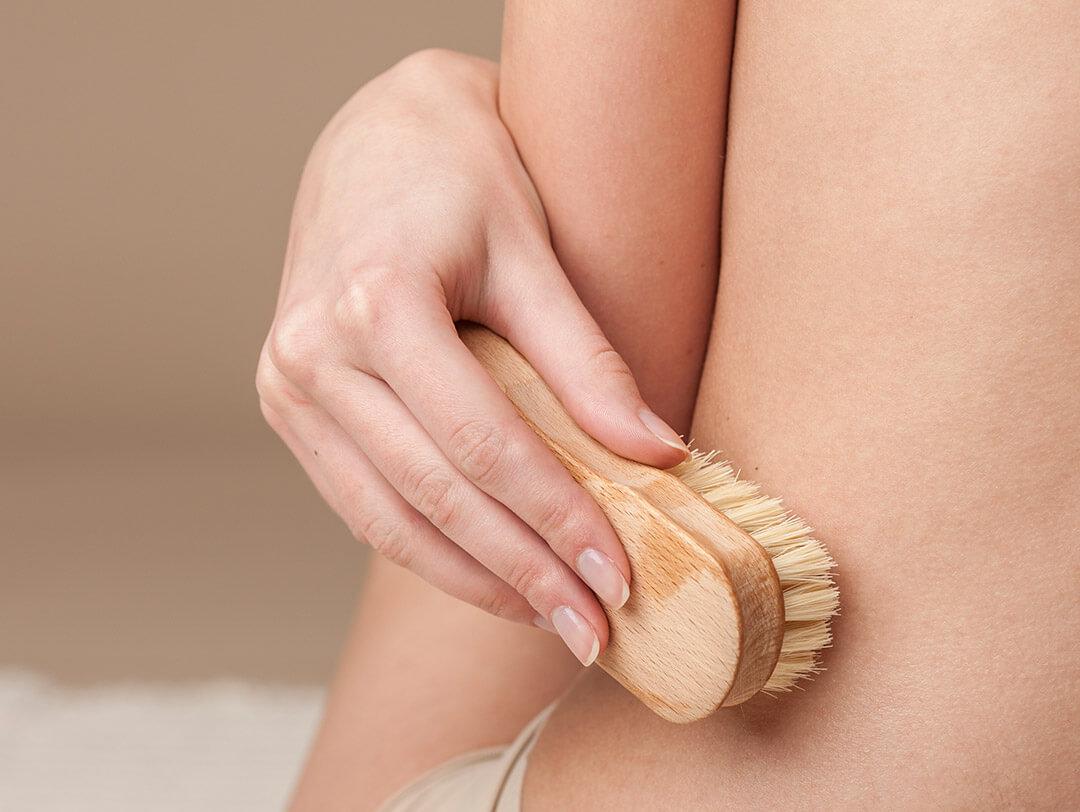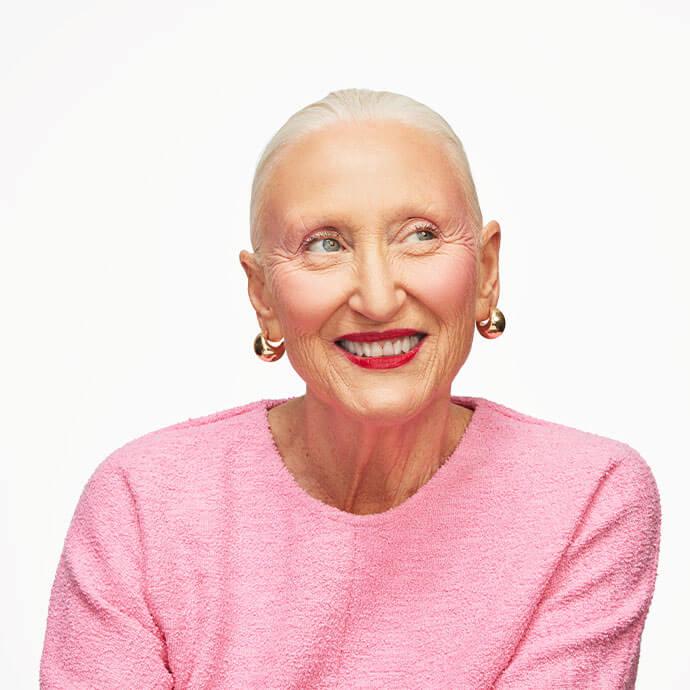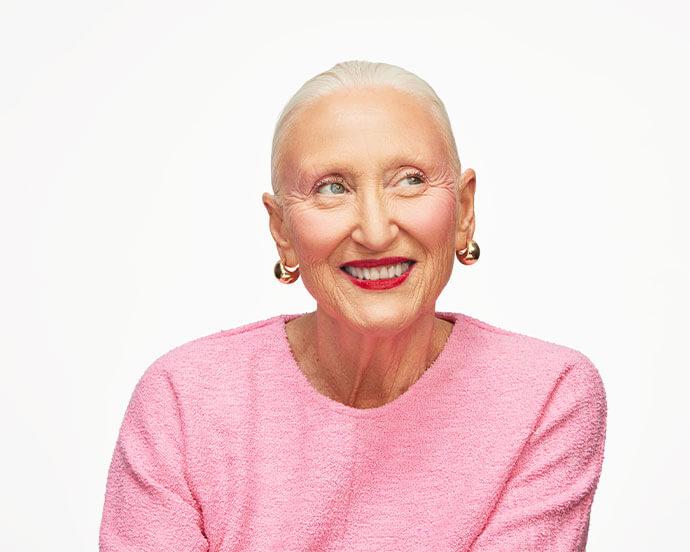Your Complete Guide to Dry Brushing (The Secret to Smoother, Firmer Skin All Over)



Kindra Moné


We’re all on the quest for smooth, glowing skin, but so often the skin below our necks gets overlooked and ignored. So if you’re looking to take your body care up a notch, dry brushing is surely a great place to start. I mean, brushing your skin? That is what we like to call self-care, honey!
Celebrities and wellness gurus alike swear by the results, and it seems to be growing in popularity by the minute—but what exactly is dry brushing, and should we all be doing it? Read on to learn about what dry brushing can (and can’t) do for your skin.


It's about glam time you treated yourself.
So, What Exactly Is Dry Brushing?
First things first, it’s important to give credit where it’s due and express that dry brushing is nothing new. In fact, it’s about 5,000 years old and originated in India, also appearing as a ritual in ancient Greek and Japanese cultures. It’s originally known as Garshana–a traditional Ayurvedic dry massage technique that uses a firm brush or another exfoliating surface like silk gloves or a loofah for health and beauty benefits.
At its core, “dry brushing is a form of physical exfoliation”, says Dr. Hadley King, a New York City-based dermatologist. The process is called "dry brushing" because neither your skin nor the brush bristles are wet when you brush–you simply rub a brush along your dry skin in long sweeping or circular motions to slough off dead skin cells, stimulate the lymphatic system, and enhance blood flow.
How to Dry Brush
One of the best things about dry brushing is that you can get this spa-like experience from the comfort of your home, and you don’t have to be an expert to do it. Just always be sure to avoid broken skin or sensitive areas. "Dry brushing should feel like a massage and while there will be friction, the process should never cause you any discomfort...If it hurts you are rubbing too hard,” says Dr. King. “The pressure should be very gentle.”
For Your Body
Choose your brush
The brush you choose makes all of the difference in your dry brushing experience. You want the bristles to be firm enough to exfoliate your skin, but they should never feel painful. A brush with a long handle like THE ORGANIC PHARMACY Skin Brush is ideal for dry brushing your body, and the GOOP BEAUTY G. Tox Ultimate Dry Brush is also super ergonomic for easily accessing ankles and arms alike.
Work from the ground up
In order to get the most out of your dry brushing session, always start with your feet first and work your way up from there. Use circular motions around your knees and elbows, taking about 3 to 5 minutes to work your way from your feet to your shoulders.
Brush towards the heart
Dry brushing is said to stimulate blood flow that supports lymphatic drainage, and while we’ll touch a bit more on the benefits later, these invigorating results are best experienced when you brush in sweeping motion towards the heart. While brushing your stomach, this means moving counterclockwise in a circular motion.
Take a bath or shower afterwards
We love the results of exfoliation, and that’s because of the dead skin that’s being sloughed away. To get your best results, don’t just leave the dead skin sitting there! Always dry brush before a shower so that you can rinse off the dead skin and finish with a lotion or a body oil to restore moisture.
For Your Face
Choose your brush
Dry brushing can be done anywhere on your body, including your face, but you’ll want to use a brush made with much softer bristles. “It’s best to use a soft brush for your complexion and apply only light pressure so as not to do any damage to your skin,” says Dr. King.
Try a gentle brush like the PROVINCE APOTHECARY Daily Glow Facial Dry Brush, which has a unique shape that allows you to reach the natural curves and contours of your complexion and features super-soft nylon bristles.
Begin with your forehead
Brush in super gentle, circular motions towards your chin with lightweight pressure.
Start slowly and don’t overdo it
Since dry brushing is a form of physical exfoliation, it’s best to gradually build up to a routine–and you want to be careful not to overdo it. Start with dry brushing your face for about 30 seconds once a week. If your skin reacts nicely, you can gradually increase your time and up your routine to once a week.
What Are The Benefits of Dry Brushing?
Your favorite wellness blogger has claimed that dry brushing can do practically everything except give you brand new skin, so what can dry brushing really do for you?
Reduce the appearance of cellulite: Before you get too excited, this result is only a temporary quick fix. Cellulite is made more visible by thinner skin (which can happen as we age), so the plumping effect produced by dry brushing temporarily makes tissue below the skin less visible. On the other hand, Ayurvedic beliefs express that regular dry brushing breaks up stubborn cellulite and suggests you can see results with consistent use. Who are we to argue with 5,000 years of practice?
Lymphatic drainage: Dry brushing gets plenty of props for detoxing—but the amount of toxins your body releases is really up to your kidneys and livers, so there’s not a lot of science to back this up. However, our blood carries lymph fluid, and by speeding up blood flow you can promote lymphatic drainage. Again—Ayurvedic medicine said it first!
Exfoliation: Now this one we know for sure. Dry brushing removes dead skin cells from the surface of your skin, leaving behind softer skin and the glowing complexion you’re after. It can also increase cell turnover, which encourages youthful-looking skin and can (in theory) reduce or prevent wrinkles. It can also be great before applying self-tanner for a smooth, even look.
Improves circulation: That rosy, plump look after dry brushing is the result of increased blood circulation caused by the repetitive sweeping motion and gentle yet firm bristles.
How Often Should I Dry Brush?
If you have eczema, psoriasis, or rosacea, the answer is never! Sensitive, broken skin will only become more irritated by dry brushing—so steer clear if that applies to you. Those with relatively “normal” skin (and by normal, we mean not easily prone to irritation), dry brush once or twice a week for best results. Many experts recommend dry brushing in the morning for its invigorating results.
The bottom line is that dry brushing can be a major upgrade to any body care routine. You can experience smoother, softer skin that’s primed and ready for the next steps of your routine.
Interested in more ways to upgrade your self-care? Take our Beauty Quiz now to get started with the IPSY Glam Bag. Already an Ipster? Refer your friends to earn points, which you can use toward products. Either way, don’t forget to check us out on Instagram and Twitter @IPSY.
You’re not the only one that needs to know the benefits of dry brushing. Share this article with your friends by clicking the icons below!
Liked this post? Share!
Related Stories


Skin
How to Adjust Your Skincare Routine for Mature Skin in the Winter
Published on Dec 4, 2025 • 7 min read


Skin
Meet the Best Moisturizers for Winter, According to Dermatologists
Published on Dec 1, 2025 • 9 min read


Skin
What Is Inflammaging—and Why Everyone’s Talking About It
Published on Dec 1, 2025 • 8 min read


Skin
6 Skincare Trends to Have on Your Radar in 2026, According to Experts
Published on Dec 1, 2025 • 7 min read


Skin
We Grabbed Our Crystal Ball and Found These 6 Skincare Predictions for 2025
Published on Dec 10, 2024 • 7 min read


Skin
Simple Self-Care Tips That Actually Make a Difference
Published on Nov 13, 2025 • 12 min read


Skin
These 9 Face Scrubs Will Unlock Soft and Smooth Skin on Contact
Published on Nov 5, 2025 • 10 min read


Skin
10 Thanksgiving Foods That Will Have Your Skin Coming Back for Seconds
Published on Oct 15, 2025 • 7 min read


Beauty Picked Just for You
Get 5 products worth up to $70
Plus exclusive access to epic deals up to 80% off
Starting at just $14/month. Cancel anytime.